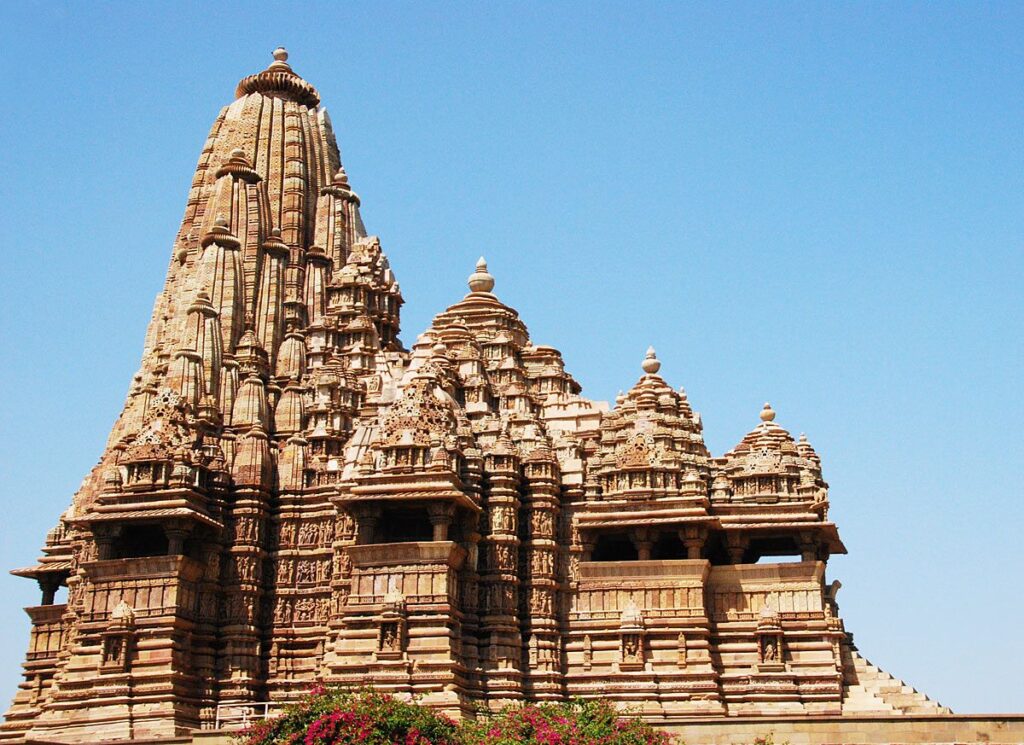
Khajuraho was an ancient city in the Madhya Pradesh region of northern India. From the 10th to 12th century CE it was the capital of the Chandella kings who ruled Bundelkhand. Despite Khajuraho’s once great reputation as an important cultural centre there are no surviving non-religious buildings, but the presence of 35 Hindu and Jain temples make it one of the most significant historical sites in India today and worthy of its name given by the 11th century CE Muslim historian Abu Rihan Alberuni as ‘the City of the Gods’. Khajuraho is listed by UNESCO as a World Heritage Site.

The Kandariya Mahadeo temple is perhaps the most eye-catching building at Khajuraho and it is certainly the largest. Built around 1025 CE during the reign of Vidyadhara (r. 1004-1035 CE), the temple is an excellent example of the fully-developed North Indian temple design. The exterior has a spectacular series of towers (sikharas) which progressively reach higher from the entrance to the tallest sikhara (31 metres) above the temple’s sacred shrine (garbhagriha) at the rear. The main sikhara is also surrounded by quarter and half-sikharas and is topped with a large amalaka – a ribbed circular stone. Thus the building appears like a mountain range of diverse peaks, a deliberate intention by the architect as Hindu temples were representative of the Himalayas and the ‘world mountain’, an effect which would have only been accentuated by its original white gesso coating, now lost.